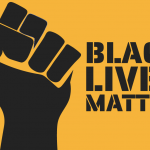Last week I went to synagogue. It’s not a common occurrence for me, but when I go I like to hear the Rabbi’s sermon. This time the Rabbi spoke about respecting people while disagreeing with them. He stressed the importance of a hug or lighter conversation after, and disagreeing respectfully.
Yet I left frustrated. I remembered a quote by James Baldwin:
“We can disagree and still love each other unless your disagreement is rooted in my oppression and denial of my humanity and right to exist.”
― James Baldwin
In the US we have a president telling us that non-white people and non-Americans and people living in poverty do not deserve their lives, their humanity, basic healthcare. How on Earth can I disagree respectfully – and then have lunch – with anyone who believes such things?
Then (of course) I thought about content strategy.
How to Disagree Respectfully
Good content strategists support their end-users. But sometimes the content strategist might disagree with (for example) the designer or developer on what the best experience is. How do you handle the situation?
One option is to talk it out, and bring everything back to testing. This is great in theory, because the answer comes from the end-user! But in reality it can take a long time, and budget that not every team can handle.
Another option is to assign an Experience Owner, or Product Lead. In this case, that person makes the final call. If the rest of us disagree we can make our case, but in the end we listen. When you place one person in charge, it shifts the mindset of disagreements.
But regardless of the choice, the most important thing to remember is why you’re bringing up your point. For example:
- Are you stating a new opinion to note that the current hypotheses may be flawed? If so, this is something to note for testing.
- Do you want to convince the team to do something different?
- Are you raising a new idea to see what the team thinks?
In other words, once you know why you’re disagreeing, you can frame it in a way that best accomplishes your goal.
When to Disagree Respectfully
The Rabbi’s sermon bothered me because it used several examples, some mild and some very important. He suggested that people should be able to disagree about immigration policies and then sit down for dinner together, or argue over political candidates and then go for a nice walk and talk about something else.
I believe we can discuss the merits of Elizabeth Warren vs Kamala Harris respectfully, and then go for a walk. But I don’t believe we can disagree on immigration and then have a nice time. I know too many people impacted by inhumane policies. I can’t pretend they’re abstract or just fodder for debate.
Equally, as content strategists and UX professionals, we each need to know when we can disagree respectfully, and when we need to speak out forcefully. If I have an idea for a different login experience, I may suggest it. But when I see a dark UX pattern in use, or accessibility thrown by the wayside, then it’s not a simple disagreement anymore. It’s a statement of fact. Protecting our end-users is our job.
Protect End Users
I quote Mike Monteiro a fair amount, and for good reason: he’s an outspoken UX advocate. He created a Designer’s Code of Ethics, which I believe we must all follow.


